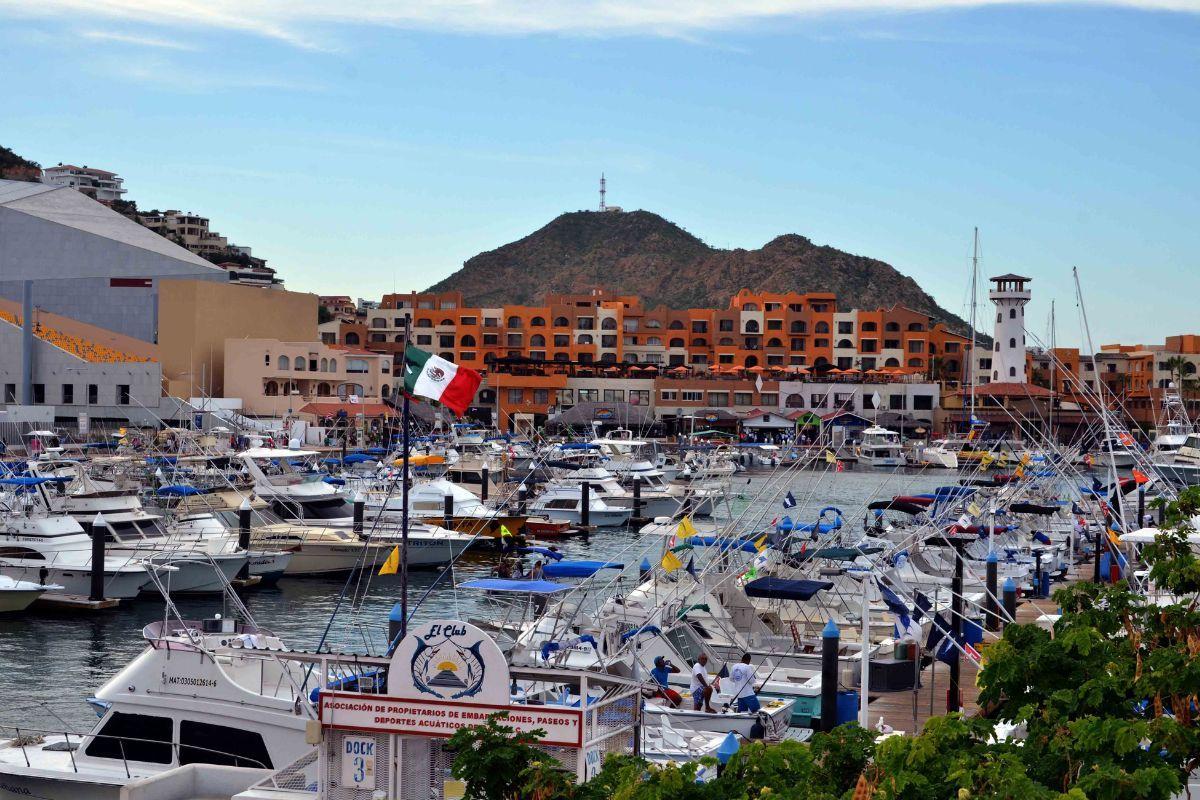Every year Los Cabos receives more and larger capacity cruise ships. These vessels often use high-sulfur fuel to generate their energy and move, which has made maritime transportation the main source of sulfur dioxide in the port, a pollutant that requires compliance with emission limits to protect human health and well-being.
The two largest ports in Baja California Sur are: La Paz and Los Cabos. The first is dedicated, mostly, to commercial transport, and the second entirely to tourism, particularly cruise ships, according to the report on ports in Mexico by the Secretariat of the Navy.
While in La Paz and Comondú, the main source of sulfur dioxide emissions is energy generation, in the rest of the municipalities of Baja California Sur (Mulegé, Los Cabos and Loreto), sulfur dioxide emissions come from maritime transportation, according to the Management Program for Improving Air Quality of the state of Baja California Sur (Pro-Aire BCS, 2018), a government instrument that establishes strategies to reduce atmospheric emissions.

This is because La Paz was called the energy heart of Baja California Sur and generates 70% of the electricity required in the state, while, for example, in Los Cabos the main economic activity corresponds to the service sector and is among the most visited ports in the world, so the source of emissions is different, said Jaqueline Valenzuela, executive director of the Center for Renewable Energy and Environmental Quality (Cerca).
“Even if the boat is standing on the coast, it continues to generate electricity and this generation of electricity, like the power plants in La Paz, is very polluting. All this time that the ships are standing there, we can compare it with the times that electricity is being generated in La Paz, only that it is not being supplied to the houses, it is being supplied to the boat itself, whose installations are intensive in energy consumption. That boat by itself would consume electricity very similar to or even greater than hundreds of thousands of houses,” Valenzuela said.
By 2024, Baja California Sur will receive approximately 246 cruise ship arrivals, of which 90% will arrive at the Port of Los Cabos, according to José Arturo Musi Ganem, president of the Mexican Cruise Association.
Since 2023, Cerca has installed eight particulate matter monitors in Los Cabos, two of them very close to the Cabo San Lucas marina, which will reveal more about the influence of vessels on the concentration of pollution.
“According to data from the 2005 Baja California Sur emissions inventory with an update in 2011, it is indicated that the main emissions in the municipality of Los Cabos are from mobile sources such as maritime transport, land transport and air transport. So for us, it was of the main interest to monitor these three important sources along the pollution route and this is how our monitoring network is distributed: two monitors near the Marina; but we also have others located in areas with greater traffic and on unpaved roads; and finally, near airports, which is another mobile source of great importance,” he explained.
However, it will be this month that they will present the results of the 2023 monitoring and they hope to carry out a formal study in four years on the health impacts of a population exposed to air pollution in the municipality of Los Cabos.
Unlike land transport such as gasoline, the type of fuel in boats contains high levels of sulfur, Valenzuela said. Sulfur dioxide emissions come mainly from larger vessels that, like power plants, run on fuel oil, burn it to move and expel emissions through chimneys.
According to information from the Institute of Americas, cruise ships dock for a period of 10 hours at ports. During this time, they keep the auxiliary motors running, the electricity, the heating of the pools and the air conditioning for those on board.
In Baja California Sur there is no official measurement of sulfur dioxide or other pollutant criteria (those that have been regulated to establish their emission limits) because there are no monitoring booths installed.
“There is a plan by the state government to install a monitoring booth, so from the location of that booth we will know official information about the six polluting criteria, one of them being sulfur dioxide,” Valenzuela said.
To avoid health impacts, the organization Cerca recommends that vessels install emission control systems and restrict the use of high-sulfur fuels in domestic waters.
“What we need is to take seriously the effects so that the operation of these vessels will strictly include these environmental control systems installed in chimneys and also comprehensive control systems to take care of the issue of discharges to the sea; and on the other hand to use fuel that is cleaner, that is, that its sulfur concentration is not so high, because here in Mexico, unfortunately, the use of a fuel high in sulfur is still allowed (in boats) that transit even in national waters. Emphasize the quality of the fuel that is being used not only in economic terms, but also in environmental terms and the health of the population,” said Valenzuela.



Comentarios (0)